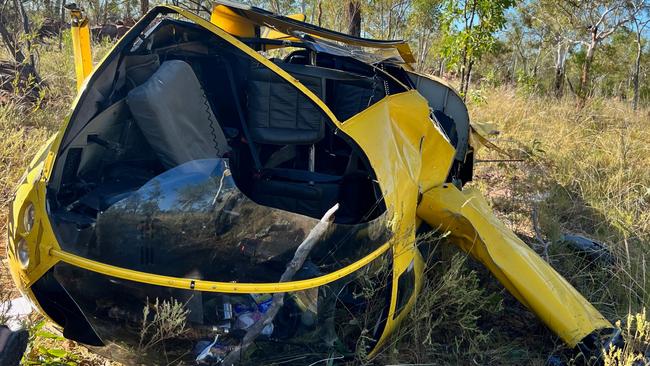ATSB reveals passengers were not safety briefed before helicopter crash
The final report for an investigation into a Territory helicopter crash has revealed the three harrowing errors that took place before disaster struck.
Northern Territory
Don't miss out on the headlines from Northern Territory. Followed categories will be added to My News.
The aviation watchdog has revealed a safety briefing did not occur before a scenic helicopter trip that ended in disaster.
A Robinson Helicopter R44 plummeted 130m from the air while flying near Nathan River Station, at Limmen National Park on May 16 last year.
The Australian Transport Safety Bureau’s crash investigation revealed passengers understood how to operate the helicopter’s three-point harness but were not instructed on brace positions and helicopter safety.
“When questioned sometime after the accident, the pilot advised they did not remember completing the briefing but would find it odd if they had not done so,” the report said.
“The passengers all commented that when the pilot called ‘brace’ prior to the accident, they did not know how to do so.”

The crash near Lorella Springs left a Victorian tourist in a Darwin hospital for three weeks after his back was broken in six places, and he suffered nine broken and displaced ribs, two collapsed lungs, sheering of his spinal cord and severe psychological trauma.
The pilot and two other passengers suffered minor injuries.

ATSB transport safety director Stuart Macleod said the crash also served as a warning to follow correct maintenance procedures after the investigation found two key parts of the aircraft were not properly cared for.
The final report into the crash revealed a seized clutch bearing resulted in a “total loss of drive from the engine to the rotor system”.
“During cruise, the pilot detected vibrations and observed the engine RPM rise and then drop to zero,” the report said.
“In response, the pilot initiated an autorotation, flaring above trees before the helicopter contacted the ground initially on the right front side, nose low.
“The helicopter then spun and rolled on to the left side facing the opposite way to the direction of travel.”
The ATSB also found the helicopter’s emergency locator transmitter did not activate during the accident as it had not been maintained.
“If a maintainer considers that additional maintenance should be conducted on any component of an aircraft, they should contact the manufacturer for engineering advice before varying from the procedure,” Mr Macleod said.




